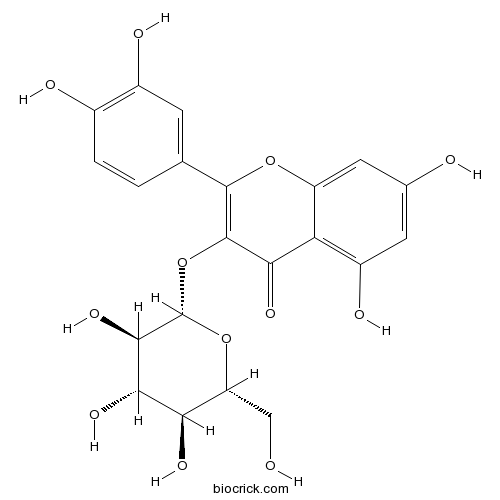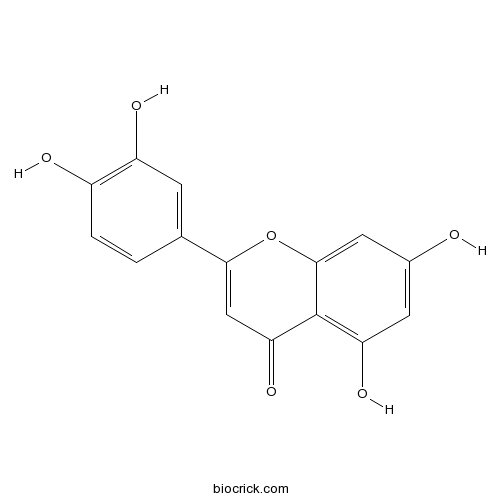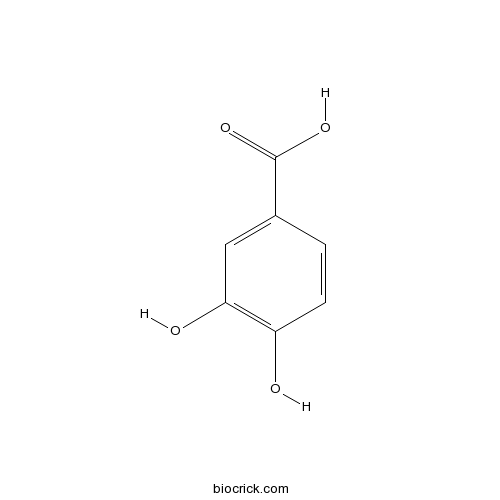Blumea balsamifera
Blumea balsamifera
1. The products in our compound library are selected from thousands of unique natural products; 2. It has the characteristics of diverse structure, diverse sources and wide coverage of activities; 3. Provide information on the activity of products from major journals, patents and research reports around the world, providing theoretical direction and research basis for further research and screening; 4. Free combination according to the type, source, target and disease of natural product; 5. The compound powder is placed in a covered tube and then discharged into a 10 x 10 cryostat; 6. Transport in ice pack or dry ice pack. Please store it at -20 °C as soon as possible after receiving the product, and use it as soon as possible after opening.

Natural products/compounds from Blumea balsamifera
- Cat.No. Product Name CAS Number COA
-
BCN5569
Isoquercitrin482-35-9
Instructions

-
BCN5570
Hyperoside482-36-0
Instructions

-
BCN5600
Luteolin491-70-3
Instructions

-
BCN2356
Diosmetin520-34-3
Instructions

-
BCN1209
Eriodictyol552-58-9
Instructions

-
BCN4443
Xanthoxylin90-24-4
Instructions

-
BCN6309
Coumarin91-64-5
Instructions

-
BCN4537
3,4-Dihydroxybenzoic acid99-50-3
Instructions

[Comparative Analysis of Main Morphological Characters and Interrelationship in Blumea balsamifera].[Pubmed: 30088747]
To investigate the main morphological characters and interrelationship of Blumea bdsamifera, and to provide the guidance for selection and breeding of Blumea balsamifera.
[Effect of Plant Density and Harvest on Yield and Quality in Blumea balsamifera].[Pubmed: 30080341]
To study the effects of different plant density and harvest time on the yield and quality of Miao medicine Blumea balsamifera, in order to provide a theoretical basis for Good Agriculture Practice( GAP).
NO inhibitory constituents as potential anti-neuroinflammatory agents for AD from Blumea balsamifera.[Pubmed: 29275263]
Our continuous search for new nitric oxide (NO) inhibitory substances as anti-neuroinflammatory agents for AD resulted in the isolation of one new labdane diterpenoid and three new guaiane sesquiterpenoids, as well as ten known compounds from Blumea balsamifera. Their structures were elucidated by NMR spectroscopic data analysis and the time-dependent density functional theory (TDDFT) electronic circular dichroism (ECD) calculations. The anti-neuroinflammatory effects were examined by inhibiting NO release in LPS-induced murine microglial BV-2 cells. The possible mechanism of NO inhibition of some bioactive compounds was also investigated using molecular docking, which revealed the interactions of bioactive compounds with the iNOS protein.
Effects and Mechanisms of Total Flavonoids from Blumea balsamifera (L.) DC. on Skin Wound in Rats.[Pubmed: 29257119]
None
NIR Rapid Assessments of Blumea balsamifera (Ai-na-xiang) in China.[Pubmed: 29035305]
None
[Metabolic pathway of flavonoids in Blumea balsamifera].[Pubmed: 28925160]
To better understand the biosynthetic pathway of flavonoids in Blumea balsamifera, and to increase the biosynthesis of flavone and flavonol amount, we carried out this research. Basing on transcriptome information, B. balsamifera flavonoids metabolic pathway was analyzed in KEGG data base. The result demonstrated that two metabolic pathways of flavonoids were found in KEGG data base. They were flavonoid biosynthesis pathway (No.ko00941) that contained 32 genes and flavone and flavonol biosynthesis pathway (No.ko00944) that contained 12 genes. Metabolic pathway of flavonoids in B. balsamifera was similar to that in other plants. Chalcone synthase (CHS) and Chalconeisomerase were much likely to be key enzymes on metabolic pathway of flavonoids in B. balsamifera. HCT was much relevant to biosynthesis of favones.
[Climatic division of Blumea balsamifera in Guizhou province based on topographical conditions].[Pubmed: 28920365]
According to the meteorological index of the growth of Blumea balsamifera, and by using the climate and geographic date recorded in the main meteorological stations for 54 years(1960-2014) in Guizhou province, the authors established a regression model between climate division factors and geographic information for the possible planting area. Considering integrated various factors including climate factor, gradient and elevation, based on GIS technology, ascertain the planting area of B. balsamifera. Combined with the land use condition of Guizhou province based on RS, analyzed the distribution rule of the synthesis index, climatic divisions of B. balsamifera in Guizhou were divided into 3 areas (the most suitable, suitable, sub-suitable) objectively. There are 3 areas can plant B. balsamifera (the southwest, the south and the north). The most suitable climate area has 76.98 km², the suitable climate area has 156.04 km², and the sub-suitable climate area has 235.43 km².
Variations in Essential Oil Yield, Composition, and Antioxidant Activity of Different Plant Organs from Blumea balsamifera (L.) DC. at Different Growth Times.[Pubmed: 27527137]
Blumea balsamifera, also named Ainaxiang, is widely used as an ancient medicinal herb in tropical and subtropical Asia. It is rich in essential oils. In this work the essential oils of B. balsamifera from different plant organs and in different months were extracted, and then analyzed by gas chromatography-mass spectrometry. The results showed that essential oil yield of young leaves was the highest (0.65 mL/100 g), followed by mature leaves (0.57 mL/100 g), and the oil yield was higher in October (0.47 mL/100 g) than other months. A total of 44 compounds were identified, representing 92.64%-96.71% of the oil. Eighteen common chemical components were found among the six plant organs, representing >80% of the oil constituents. l-borneol was the main ingredient in leaves, and its content was the highest in senescent leaves and in December. In the essential oils of young shoots and young stems, the main component was dimethoxydurene. Antioxidant activity was also determined using the 2,2-diphenyl-1-picrylhydrazyl (DPPH) and β-carotene bleaching (BCB) assays. The results indicated that the β-carotene bleaching activity was far stronger than the DPPH radical-scavenging capacity, and the young leaves and young shoots showed stronger antioxidant activity. Dimethoxydurene, β-caryophyllene, and α-caryophyllene play a positive role in good antioxidant activity, while β-eudesmol, phytol, and tetradecanal play a negative role. The antioxidant activity revealed in this study might help in developing this promising bioresource for use in the medicinal and cosmetic industries.


